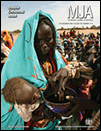Phone use and crashes while driving: a representative survey of drivers in two Australian states
Abstract
Objective: To explore the use and effects of using mobile phones while driving.
Design: Cross-sectional survey.
Setting: New South Wales and Western Australia, 20 October to 7 November 2003.
Participants: 1347 licensed drivers aged 18 to 65 years. Data were weighted to reflect the corresponding driving population in each state.
Main outcome measures: Mobile phone use while driving (hand-held, hands-free and text messaging); adverse effects of use.
Results: While driving, an estimated 57.3% ± 1.5% of drivers have ever used a mobile phone and 12.4% ± 1.0% have written text messages. Men, younger drivers and metropolitan residents were more likely to use a phone while driving and to report a higher frequency of use. Enforcement of hand-held phone restrictions was perceived to be low (69.0% ± 1.5%) and an estimated 39.4% ± 2.1% of people who phone while driving use a hand-held phone. Half of all drivers (50.1% ± 1.6%) did not agree with extending the ban to include hands-free phones. Among drivers aged 18–65 years in NSW and WA, an estimated 45 800 ± 16 466 (0.9% ± 0.3%) have ever had a crash while using a mobile phone and, in the past year, 146 762 ± 26 856 (3.0% ± 0.6%) have had to take evasive action to avoid a crash because of their phone use.
Conclusions: Phone use while driving is prevalent and can result in adverse consequences, including crashes. Despite legislation, a significant proportion of drivers continue to use hand-held mobile phones while driving. Enhanced enforcement is needed.




